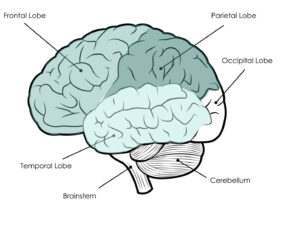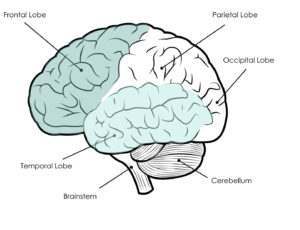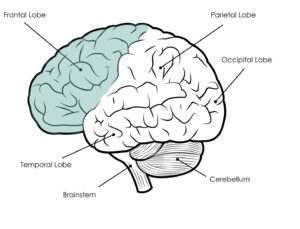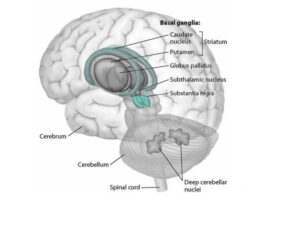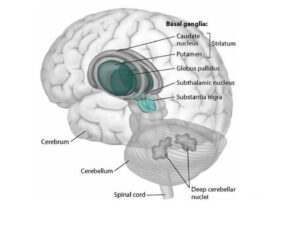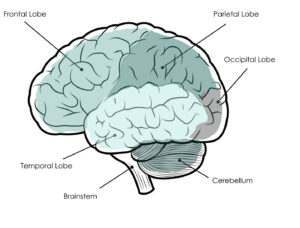What is Dementia?
- Dementia is a loss of cognitive ability that is severe enough to interfere with daily life.
- Dementia is a descriptive term for a collection of symptoms that can be caused by a number of disorders that affect the brain.
- Dementia could be:
- Static: result of a unique global brain injury.
- Progressive: resulting in long term decline due to damage or disease in the body.
The Impact and Diagnosis of Dementia
- People with dementia have significantly impaired intellectual functioning that interferes with normal activities and relationships.
- They lose their ability to solve problems and maintain emotional control. They may also experience personality changes and behavioral problems such as agitation, delusions, and hallucinations.
- Doctors diagnose dementia only if there is a decline in memory coupled with a decline in one or more of the following brain functions – language skills, motor skills, abstract thinking, perception, or cognitive skills, including reasoning and judgment.
The Cost of Dementia
- The total estimated global cost of dementia is now above $1.3 trillion dollars and is expected to rise to $2.8 by 2023.*
- This means that if global dementia care were a country, it would be the 18th largest economy in the world. The annual costs exceed the market values of companies such as Apple ($742 billion) and Google ($368 billion).
- The real cost:
- Loss of loved ones
- Loss of an entire generation of wisdom
- Loss of precious memories
*This figure includes costs attributed to informal care (unpaid care provided by family and others), direct costs of social care (provided by community care professionals, and in residential home settings) and the direct costs of medical care (the costs of treating dementia and other conditions in primary and secondary care).
Learn how you can join us to help fund the fight! Get Involved
The Types of Dementia
Alzheimer’s Disease
- Most common type of dementia found in people aged 65 or older.
- 1 in 9 people age 65 and older has Alzheimer’s disease (11%).
- 5.2 million Americans are estimated to have Alzheimer’s.
- By 2025, over 7.1 million Americans will have Alzheimer’s.
- Every 68 seconds, someone in the United States develops Alzheimer’s.
- Alzheimer’s disease usually causes a gradual decline in thinking abilities, usually during a span of 7 to 10 years.
- In this disease, abnormal protein deposits in the brain destroy cells in the areas of the brain that control memory and mental functions.
- People with Alzheimer disease also have lower-than-normal levels of brain chemicals called neurotransmitters that control important brain functions. Alzheimer disease is not reversible, and no known cure exists. However, certain medications can slow its progress.
Dementia Vs. Alzheimer’s Disease - Is there a difference?
Dementia is a syndrome that is used to describe an overall group of symptoms that affect a person’s memory, communication, and ability to perform normal daily tasks. Alzheimer’s disease is a specific form of dementia, affecting a specific region of the brain causing impairment in memory and cognitive function.
Frontotemporal Dementia (FTD)
- FTD describes a group of diseases characterized by degeneration of nerve cells – especially those in the frontal and temporal lobes of the brain. Unlike Alzheimer’s disease, frontotemporal dementia usually does not include formation of amyloid plaques.
- In many people with frontotemporal dementia, there is an abnormal form of tau protein in the brain, which accumulates into neurofibrillary tangles. This disrupts normal cell activities and may cause the cells to die.
- Experts believe frontotemporal dementia accounts for 10% to 20% of all dementia cases.
Lewy Body Dementia (LBD)
- Lewy Body dementia is caused by a build-up of abnormal protein deposits called alpha-synuclein in the brain, these proteins are also known as Lewy bodies. These deposits develop within nerve cells in a number of regions within the brain: cerebral cortex (thought, language, perception), limbic cortex (emotion), hippocampus (memory), midbrain and basal ganglia (movement) and the brain stem (sleep & alertness).
- Statistics state this is the second most common type of progressive dementia, affecting more than 1 million individuals in the U.S.
- LBD and Parkinson’s disease reflect the same biological changes in the brain and over time individuals diagnosed with either disease may develop similar symptoms.
Parkinson’s Disease
- Parkinson’s disease is the degeneration of nerve cells affecting predominantly dopaminergic neurons in brains substantia nigra. This nerve cell damage in the brain causes dopamine levels to drop, leading to the symptoms of Parkinson's.
- Many individuals diagnosed with PD experience symptoms such as tremors, slow movement, stiffness over time, and loss of balance.
- There have been advancements in medications that can help control the symptoms of Parkinson's, but the initial cause still remains largely unknown.
Huntington’s Disease
- Huntington’s Disease is a hereditary neurodegenerative disease caused by an expansion of a repeating CAG triplet series in the huntingtin gene on the 4th chromosome. This affects the basal ganglia which controls individuals movement and behavior.
- Some experts describe symptoms for those diagnosed with Huntington's as experiencing ALS, Parkinson’s and Alzheimer’s simultaneously. To name a few: personality changes, mood swings, depression, memory loss, and speech impairments.
- There is currently no cure or treatment which can halt, slow or reverse the progression of the disease.
Creutzfeldt-Jakob Disease (CJD)
- Creutzfeldt-Jakob disease is a rapidly progressing and fatal neurodegenerative disease caused by contact with infected tissue.
- Symptoms of this disease include mood or behavior changes, depression, memory loss, and impaired judgement. This disease progresses very quickly with most cases resulting in death within one year.
- There is no effective treatment that exists, therefore all efforts thus far focus is on alleviating pain and relieving symptoms.
Vascular Dementia (VaD)
- Vascular dementia is the progressive worsening of memory and cognitive functions caused by damaged blood vessels in the brain from prolonged reduced or blocked blood flow. A stroke is a common cause of VaD and can cause many different symptoms that may include memory, thinking, or movement changes.
Mixed Dementia (MD)
- Mixed dementia is a condition where changes representing more than one type of dementia occur simultaneously in the brain. In the most common form, the plaques associated with nerve cells in Alzheimer's disease are present alongside the blood vessel changes associated with vascular dementia.
- In special cases, a person may have changes linked to all three - Alzheimer’s disease, vascular dementia and Lewy Body dementia.
- Symptoms vary depending on the types of brain changes involved and the areas of the brain affected
Staggering Statistics
Helpful Resources to Learn More About Dementia
Clear Thoughts Foundation (“CTF”) is singularly focused on its effort to raise money to fund the discovery of drugs to stop the effects of dementia and eventually end this terrible disease. However, CTF recognizes the devastating effect that dementia has on the families impacted by this disease. Fortunately there are a number of wonderful resources available that we recommend for caregivers and families impacted by dementia to turn to for education and support.
